Choice Activities
We want to create a cohesive system in which all stakeholders benefit from the extraction and sale of Sierra Leonean diamonds.
How might we develop and improve the equitable earning power for landowners of minerals in Sierra Leone?
Sierra Leone is a diamond-rich country that exports over $250 million worth of uncut diamonds each year ($6 billion in retail value), yet 70% of its people live below the $1.25-a-day poverty line.
Developed a profit-sharing model for a sustainable diamond company that aims to liberate over 100 million miners and landowners in the artisanal mining communities. This will protect the miners against exploitative and oppressive systems by using local resources of diamonds to sustain, heal, empower communities, and return profits to those communities.
December 2018 - February 2019




My ethnographic research study was done in the Kono district in Sierra Leone. There, we met and interviewed landowners, miners, and leaders in the communities to find leverage points that bridge gaps in the artisanal mining sector. We chose this district for ethnographic research because it is one of the world’s most fought-over regions due to its abundance of natural resources.
To understand artisanal mining practices -- in particular, the poor working conditions, and lack of profit sharing and attitudes of affected populations, to identify interventions for small changes at the individual, community or system level to improve the social, economic, and environmental well being of diamond miners and their communities.
We analyzed and researched the current mining ecosystem in Kono, Sierra Leone to understand who wins and who loses from before the diamonds are dug up until they are moved out of the country.
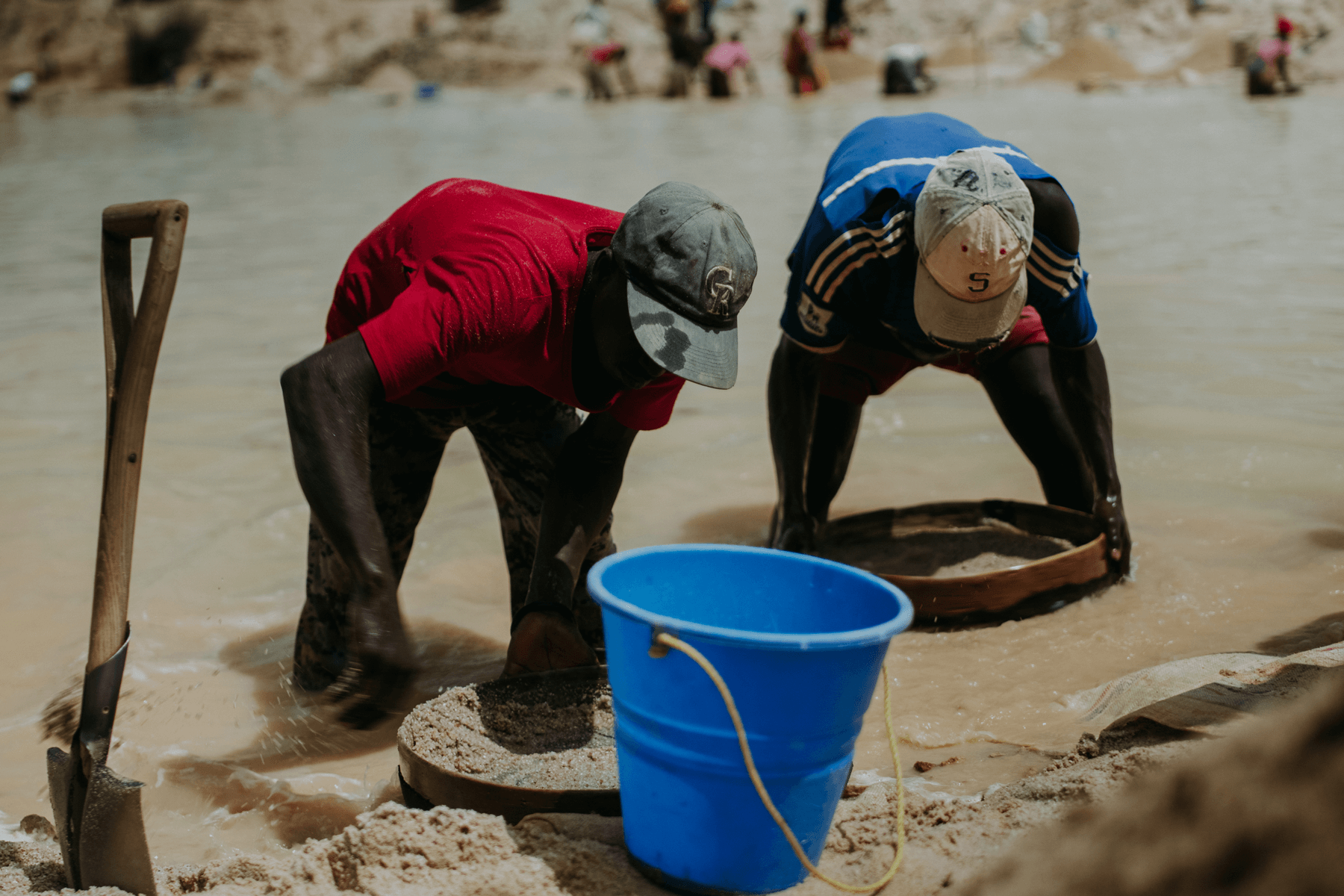
Sierra Leone, West Africa. A population of 7 million recovering from a civil war, diamond-rich soil, Kinships, patriarchal, ethic divisions.
Financial
venture funds, Grants, Medic Ventures
Human
Kimberly Certificate, NGOs, Chiefs, Landowners,
Knowledge
Knowledge
RAPnet marketplace, Kono Miners Association
Networking
Diamond Developmental Initiatives DDI, Guinea project, DeBeers
Technological
Blockchain technology, Tracr
Democracy, heavily corruption, social welfare, NGO's
Debeers, Russia, Canada, Botswana, Rio Tinto, Alorrasa
Offer beautiful and affordable diamonds, ethically mined so that landowners are protected, mining communities are strengthened, and entrepreneurship is fostered in one of the poorest places on earth.
My fair Diamond, Government of Sierra Leone, Ministry of Mines, NPOs, NGO, Ministry of Land, Minister of Commerce, Minister of infrastructure , DDO
80/20, Foreign Direct investments, Capitalistic, Corruption
Department of Mines, Debeers
Landowners and miners living below $1 a day
Synthetic diamond led initiatives, Debeers, Corrupt Governments
A diamond project with entirely ethical and traceable diamonds that connects buyers and landowners that aims at improving the standard of living for landowners across all continents

Landowners theoretically control the land, but most lack the resources to be able to profit from it. They have little leverage over profit distribution.

Supporters sponsor landowners with resources to extract diamonds from the land, also taking a percentage of profit.

Miners do not own land and want to find any employment that will help them support themselves and their families.
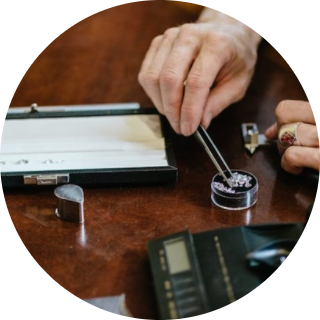
Diamond dealers act as middlemen, buying diamonds at the lowest prices possible and selling them to Exporters.
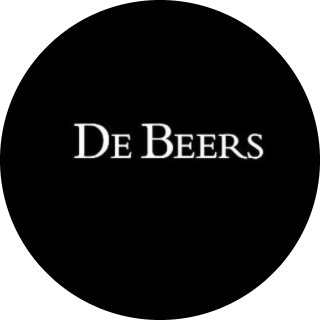
Exporters take diamonds outside the ecosystem, further monetizing them on the international market.
Choice Activities
We want to create a cohesive system in which all stakeholders benefit from the extraction and sale of Sierra Leonean diamonds.
How all stakeholders will work together for a better system. This showcases a perfect system
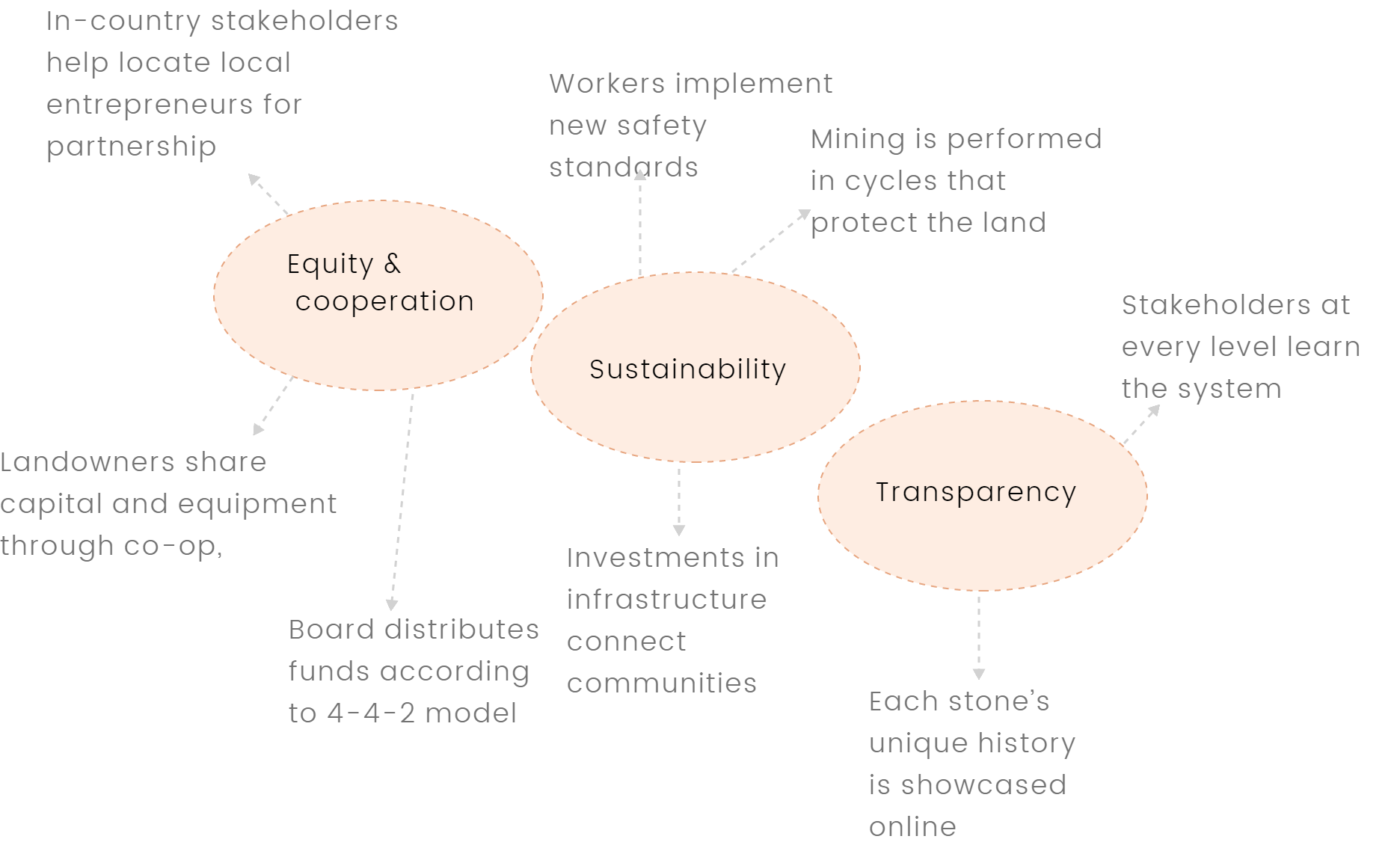


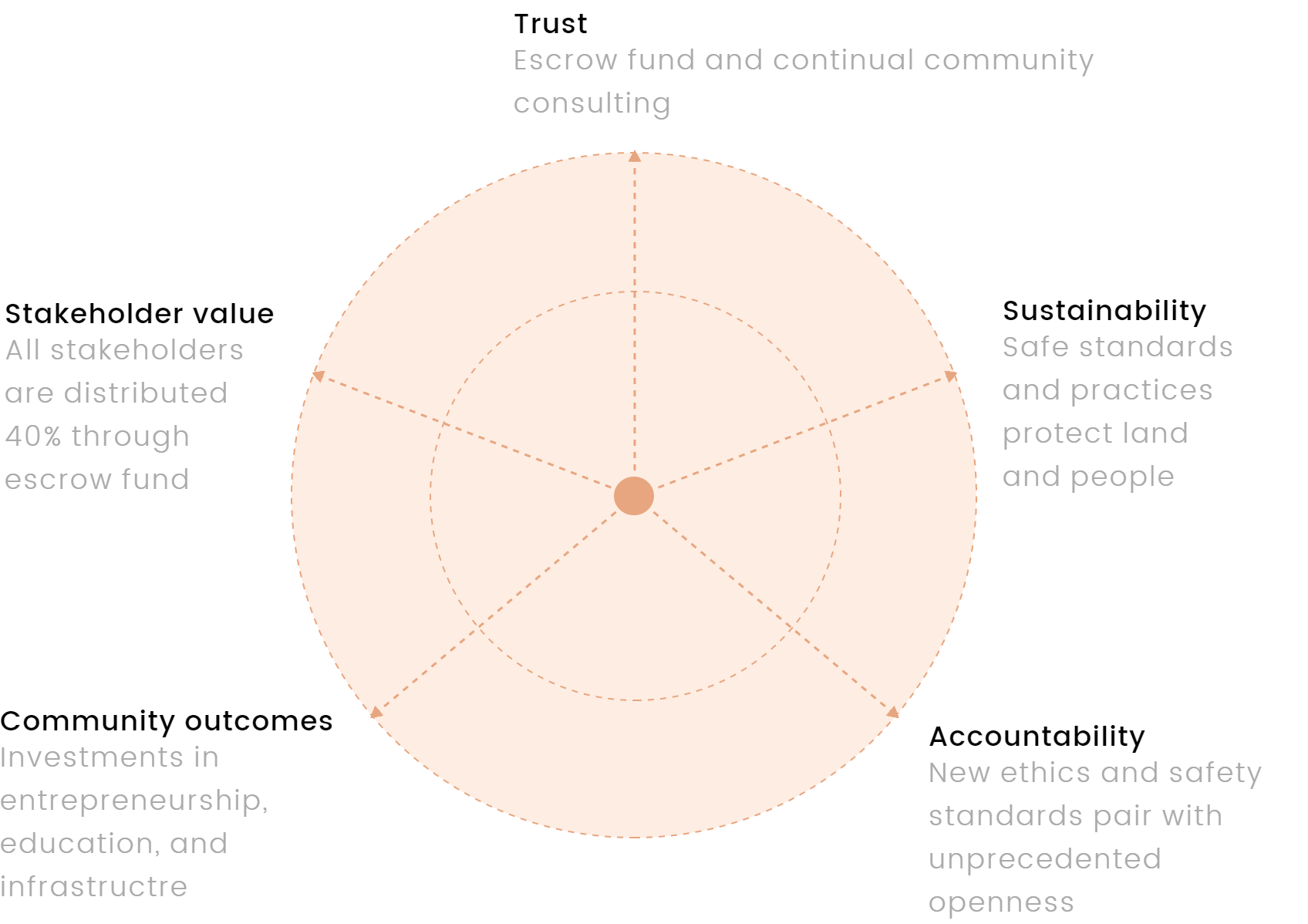

How might we develop and improve equitable earning power for landowners of diamonds in African nations?

With general research concluded, now I wondered: “How did the community in Kono, Sierra Leone understand the issues affecting them through the diamond mining industry? How could we address those problems alongside them?”
I traveled to Sierra Leone with a small team to consult village elders, landowners, and mining professionals in the Kono District. This area is one of the most fought-over pieces of land on earth due to its diamonds.
Many expressed frustrations about the current, mostly foreign-run mining industry, especially poor working conditions and lack of profit-sharing for landowners and mine workers.

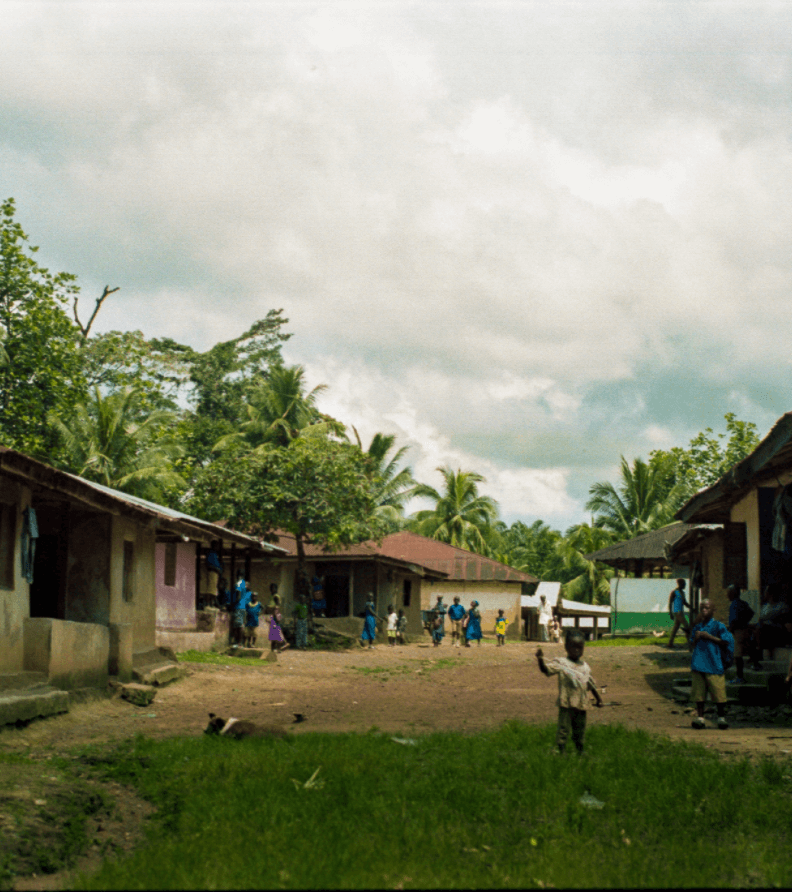
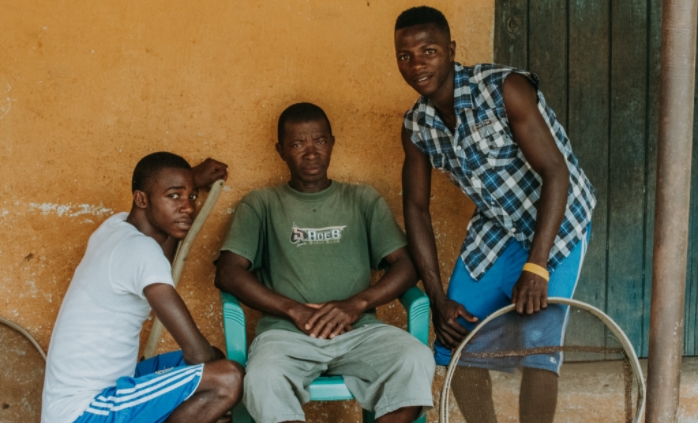
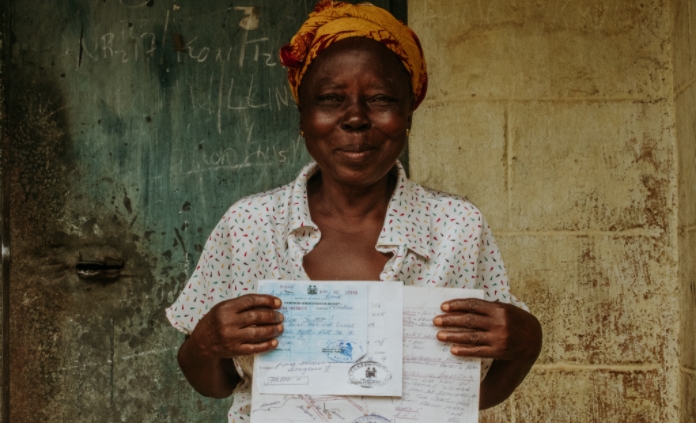
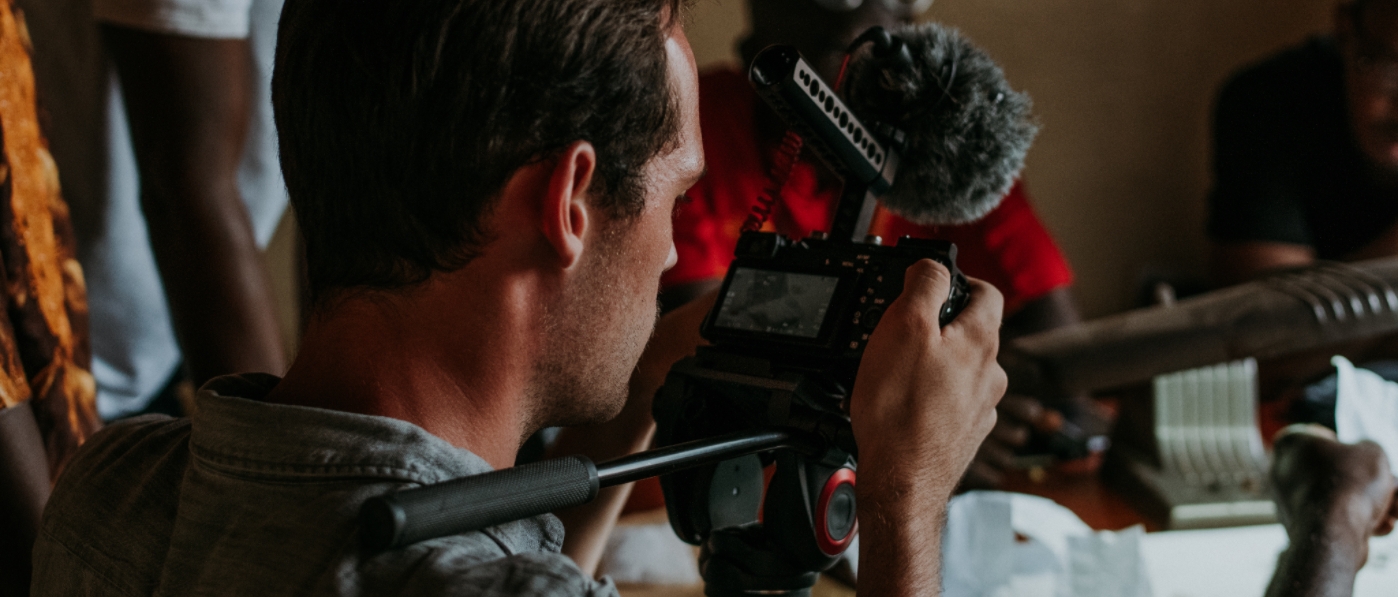
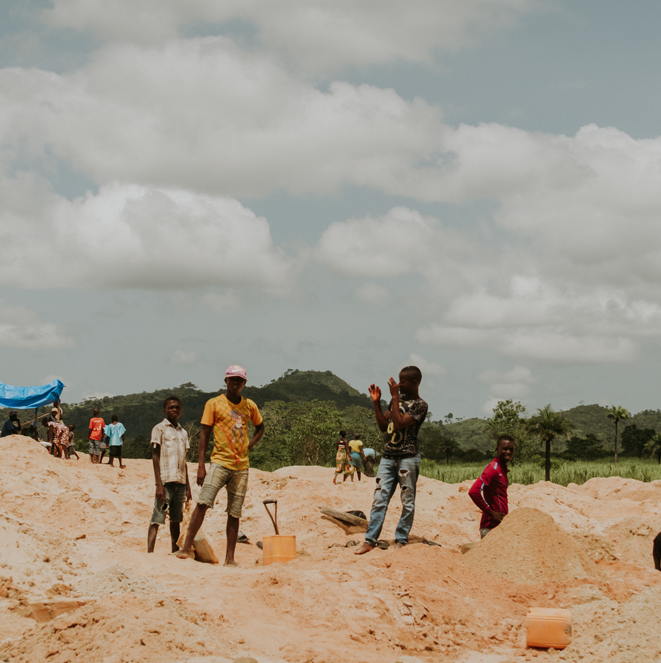

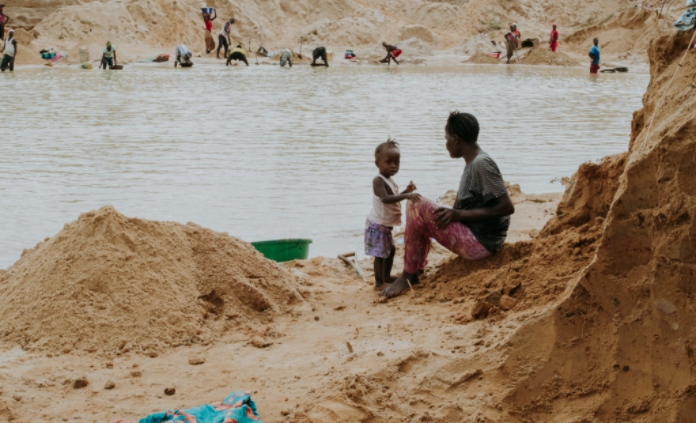


Fair price and access to international markets When workers receive fair wages and landowners can sell their diamonds on the international stage without outside capital, profit will return to the community, changing outcomes for generations.
Protect the environment/ transform inhumane working conditions Our efforts must be sustainable if they are going to positively affect future generations.
Create entrepreneurship and business pathways We want the surrounding community to gain autonomy. Most people want to build ways to sustain themselves and their families and thrive. Many efforts to help communities end up competing with local efforts (for example, aid in the form of shoes prevents local shoemakers from thriving). In contrast, our model needs to lift everyone in the community, increasing their opportunities to create and sell.

The trip revealed the enormous and troubling scope of problems facing exploited diamond mining communities, but also helped us to develop solutions within our business model. Each problem has multiple roots. For example, illiteracy is affected by poor wages as children skip studies and become mine workers for their families’ survival, and few teachers can work for the low wages the community can offer. At the same time, many in the community are eager to create businesses, and an entrepreneurial instinct already exists.
By consulting with mine workers and community elders, we discovered the challenges they most wanted us to address: the lack of capital returning to the community as value is stripped by outside investors, poor working conditions, and the toll on the environment.
Ultimately, we responded with the 4-4-2 Business Model. 40% of earnings are invested in the organization, 40% return to the stakeholders (including mine workers and landowners) through equitable distribution, and 20% are reinvested into the community through new infrastructure and investments in local entrepreneurship

Artisan Miner
Married, 35 years old
Kono, Sierra Leone
"I want to provide for my family and send my kids to school. I never went, but if I can provide for them, they can become important people someday.”
“I have no capital to mine the land, so I work for large companies and have no control over what foreign investors take from my lands. When they find diamonds, they give me what they feel like giving. They have money and power."


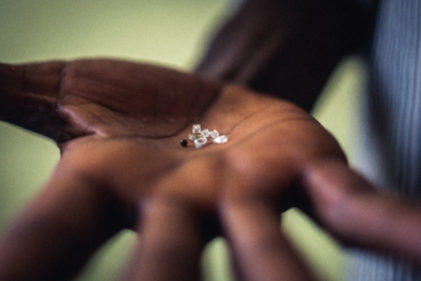

Like most miners, James Sessay is forced to work in unsafe conditions for grueling, long hours, yet he receives very little pay. Though he has avoided bringing his children to mine with him so far, child labor is a deep problem. Education opportunities are limited; James was unable to attend school because his own family lacked resources. Like other workers, he lacks tools and training on the job and lacks necessities at home.
If James will be able to reap the benefits of participating in such a lucrative trade, he needs training and tools, and he needs an opportunity to take control of his land.


What opportunities exist to intervene and impact the diamond supply chain industry?
40 % to platform
40 % to Landowners
40 % to Landowners
To guard against creating new social issues, and to protect miners, 40% of Root's profits will be placed in an escrow account and distributed monthly, as residual income, until depleted.
Of the 20% that remains in the Co-Op, 10% will be used to provide loans to entrepreneurs looking to expand their businesses.
The other 10% will be invested in infrastructure, with an initial focus on building roads across the Kono district. This will be key to commercial expansion and improved quality-of-life.
Access to lands
Capital to support mining/ purchase
Startup capital
Business model
Team
Local Company
Kono Coop Established
Supply chain & manufacturing chain validated
Traceability & blockchain technology initiated
Escrow Float
Government Partnerships
Profit-sharing 4-4-2 model initiated
Ecommerce retail and wholesale platform
Perpetual fund (infrastructure fund+ Escrow fund +microloan fund)
Empower communities to a sustainable profit of their natural resources
Access for African landowners to international markets
Develop a community of in-country diamond cutters and jewelry designers for the production of a finished product
Connect families around the globe via diamonds with precious memories that last forever
Raise the daily earnings for landowners/ miners in diamonds producing countries
Raise the number of small business entrepreneurs in diamonds producing countries that stimulate economic growth
87% of Americans will pay more for diamond jewelry if they know that the diamonds are ethically sourced.
Millennials are demanding ethical diamonds. Diamonds sales fell by 25% in early 2019.
Survey responses from our target market revealed that consumers don’t just want to know the region from which their diamond comes. They want to know each diamond’s story — the mining source community, and/or individuals behind it.
American millennials, in particular, are passionate about changing the world, not buying it. They want to be certain that the money they spend on diamonds is distributed equitably and responsibly.
Americans have reduced their diamond purchases because of the new types conflicts era in diamond mining that are gender and profit inequities, youth labor, and slave-like working conditions. They fear that they might unknowingly be supporting conflict diamonds.
Physical store
Via online
Young, upwardly mobile professionals who see diamonds as investments and may purchase them for the same purposes as previous generations.

Age: 29
Occupation: Influencer/ health authority
Family: Domestic partnership
Location: Orange County, CA
"When my fiance Madi and I met, I was already reviewing sports and nutrition products full time, both for magazines and my blog. Now we run our business together through our website and a shared IG handle, nine hours a day, five days a week.”
Alex moved to California after completing a degree in sports science and retiring from a career as a professional cyclist. Interested in writing, and skilled at using social media platforms, he launched his own business reviewing nutritional products and gear for athletes and fitness buffs. He participates in global activism: he remembers large campaigns like KONY 2012. Like many of his generation, he sources clothes and coffee from ethical sources whenever possible. Now he hopes to marry his live-in partner and business co-owner, Madi, after dating for several years.
Alex and Madi share property and have a joint checking account, having lived together in a committed relationship for six years. However, they have discussed having a minimalist wedding ceremony. Alex hopes to find a unique engagement ring. He is vaguely aware of the ethical implications of buying diamonds sourced from conflict areas and will perform research before making any purchases. He may also consider other precious stones or alternatives to traditional diamond bands, though he imagines a diamond engagement ring before anything else.

"When my fiance Madi and I met, I was already reviewing sports and nutrition products full time, both for magazines and my blog. Now we run our business together through our website and a shared IG handle, nine hours a day, five days a week.”
Age: 29
Occupation: Influencer/ health authority
Family: Domestic partnership
Location: Orange County, CA
Alex moved to California after completing a degree in sports science and retiring from a career as a professional cyclist. Interested in writing, and skilled at using social media platforms, he launched his own business reviewing nutritional products and gear for athletes and fitness buffs. He participates in global activism: he remembers large campaigns like KONY 2012. Like many of his generation, he sources clothes and coffee from ethical sources whenever possible. Now he hopes to marry his live-in partner and business co-owner, Madi, after dating for several years.
Alex and Madi share property and have a joint checking account, having lived together in a committed relationship for six years. However, they have discussed having a minimalist wedding ceremony. Alex hopes to find a unique engagement ring. He is vaguely aware of the ethical implications of buying diamonds sourced from conflict areas and will perform research before making any purchases. He may also consider other precious stones or alternatives to traditional diamond bands, though he imagines a diamond engagement ring before anything else.

The Future Grooms

Young Working Womenn

The Suburban Husbands
Stakeholders interact, receiving and offering value throughout the system.


Shape
Round
Cut
Brilliant
Colour Grade
D to F
Clarity Grade
VVS2 or better
Cut Grade
Excellent
Polish
Excellent
Symmetry
Excellent
Fluorescence
None
Certification
None
Provenance
Kimberley Process
Shape
Round
Cut
Brilliant
Colour Grade
D
Clarity Grade
Internally flawless or better
Cut Grade
Excellent
Polish
Excellent
Symmetry
Excellent
Fluorescence
None
Certification
None
Provenance
Kimberley Process & blockchain from mines